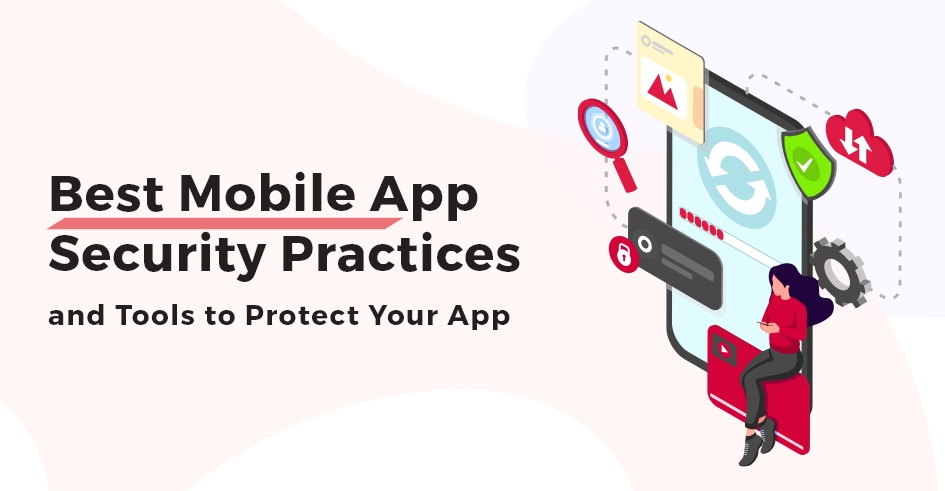Mobile app security involves the technologies and procedures used to protect mobile apps from cyberattacks and data theft.
In 2026, the Google Play Store is expected to download 143 billion mobile apps. In comparison, around 38 billion downloads from the Apple App Store are predicted for 2026.
According to this statistic, whether we’re talking about Android or iOS App Development, the number of apps keeps growing, making it a goldmine for cybercriminals. As apps become abundant, so do the threats against them.
Hackers are continually developing new ways to exploit vulnerabilities in mobile applications. This puts user data, business integrity, and the overall functionality of apps at significant risk.
Think of mobile application security like a lock on your front door. You wouldn’t leave your house unlocked, so why would you leave your app exposed? In 2024, the need to safeguard mobile apps is more critical than ever. Ignoring this could be as risky as leaving your front door wide open, inviting trouble right in.
If you want to overcome these challenges, you’re at the right place. In this blog, we will be covering:
- What is Mobile App Security?
- Why is Mobile App Security Important?
- Benefits of Strong Mobile App Security
- Mobile App Security Best Practices
- Mobile App Security Standards
- Mobile App Security Testing
- Mobile App Security Tools
- Mobile App Security Threats
- Mobile App Security Checklist
So before we experience any threat to our mobile apps, let’s start equipping you with the knowledge to defend yours.
What is Mobile App Security? How Does It Work?
Mobile app security is the practice of protecting mobile applications from unauthorized access, use, disclosure, disruption, modification, or destruction. It works by implementing various security measures, such as secure coding practices, vulnerability testing, data encryption, authentication and authorization mechanisms, and regular updates.
Imagine building a fortress around your app, with layers of protection guarding every door and window. Mobile application security goes beyond just preventing break-ins. It’s about creating a secure environment where users feel safe entering their sensitive data, like login credentials or financial details. If an app’s security is compromised, it’s not just the data that’s at risk. The app’s functionality could be disrupted, leading to a poor user experience and potential loss of business.
In the simplest terms, mobile application security is about trust. When users trust your app, they’re more likely to use it, engage with it, and recommend it to others. And in the competitive world of mobile apps, trust can be the deciding factor between success and failure.
Why is Mobile App Security Important?
Imagine this: you’re running a successful app like your favorite, and overnight, you’re hit with a security breach. A user’s data is stolen, and your app crashes, and suddenly, you face financial losses, legal issues, and a PR nightmare. Scary, right?
A security breach can have devastating consequences. Financial losses are just the tip of the iceberg. There’s also the cost of remediation, which can skyrocket depending on the extent of the breach. But the damage doesn’t stop there. Your reputation takes a hit. Users lose trust in your ability to protect their data, and once that trust is broken, it’s incredibly hard to rebuild.
Legal repercussions are another potential fallout. Depending on the nature of the data breach and the regulations in place, you could be looking at hefty fines or lawsuits. In some cases, the legal consequences can be as damaging as the breach itself.
In short, ignoring mobile application security is like playing with fire. The risks are too great, and the consequences too severe. But there’s good news: with the right security practices in place, you can protect your app and your business from these threats.
Benefits of Strong Mobile App Security
Investing in mobile application security is like investing in insurance. It might not seem urgent until you need it, but when you do, it’s invaluable.
Strong mobile app security builds user trust. When users know their data is safe, they’re more likely to engage with your app. This can lead to increased adoption and higher user retention rates. In a world where competition is fierce, user trust can set your app apart.
Additionally, a secure app can open up new revenue opportunities. For example, if your app handles sensitive transactions, like payments or financial data, a strong security posture can make it more appealing to users who prioritize safety. This can lead to increased revenue and a stronger market position.
Finally, robust mobile application security can enhance your brand’s reputation. Being known as a company that prioritizes security can position you as a leader in your industry. It’s like having a gold star next to your name—users are more likely to choose your app over a competitor’s if they know it’s secure.
New Mobile App Security Best Practices (Updated 2024)
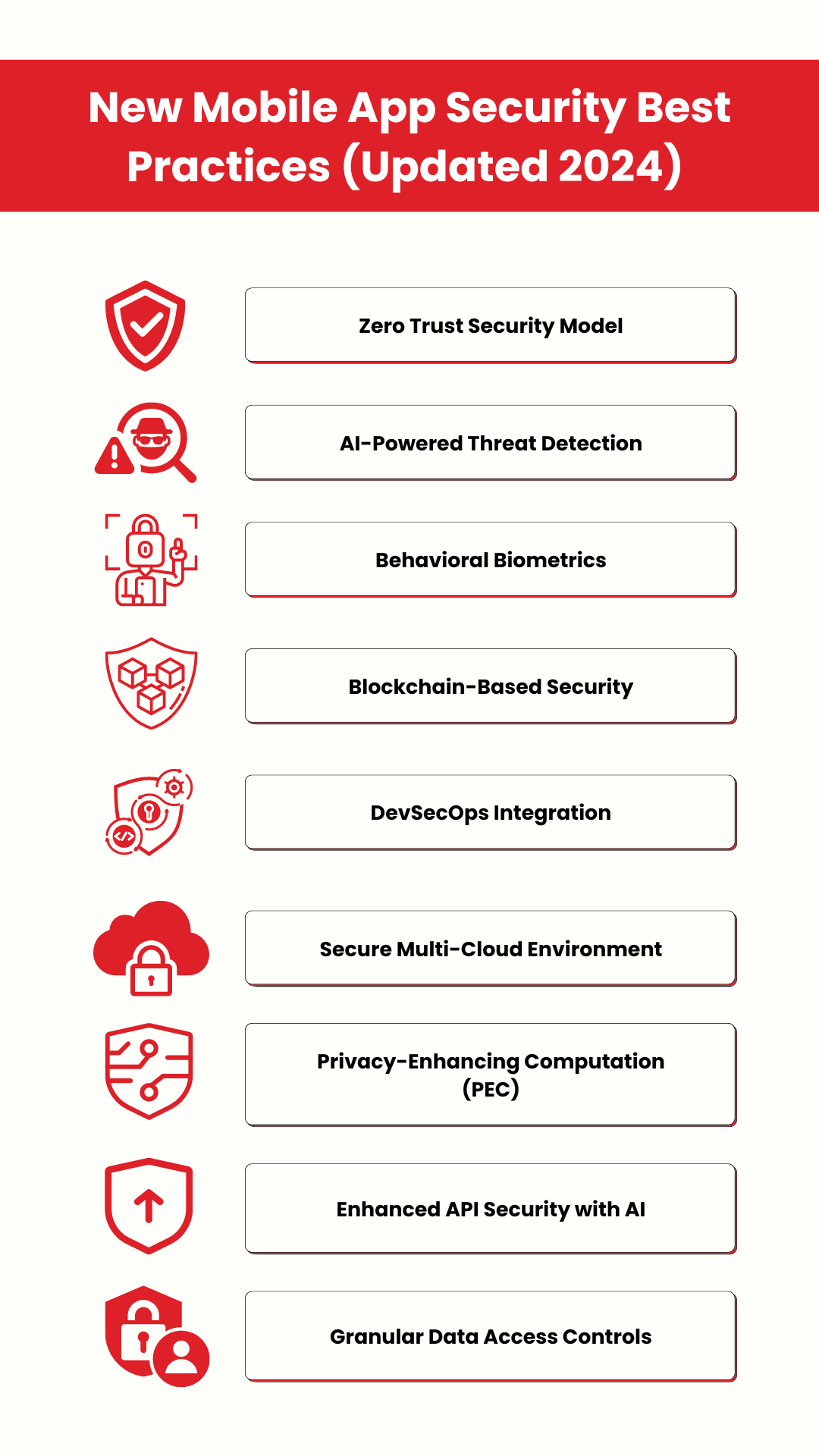
As mobile app security threats evolve, so must the practices and tools we use to defend against them. In 2024, several cutting-edge security practices are emerging, designed to combat increasingly sophisticated threats. Here’s a detailed look at the new mobile app security practices you should consider adopting this year:
1. Zero Trust Security Model
The Zero Trust Security Model is a transformative approach to mobile application security. It assumes no user or device is trustworthy by default, regardless of their location within or outside the network. It is built on the principle of “never trust, always verify.”
Implementation
- Continuous Verification: Every access request is authenticated and authorized before granting access. This applies to all users, devices, and network activities, even those already within the app’s internal network.
- Multi-Factor Authentication (MFA): Utilize MFA combined with continuous authentication throughout the user session. This ensures that even if credentials are compromised, unauthorized access is significantly harder to achieve.
- Device Compliance Checks: Regularly verify the security posture of devices accessing the app, ensuring they meet compliance standards before they are granted access.
Zero Trust provides a robust framework to prevent unauthorized access, insider threats, and data breaches by continuously validating every request.
2. AI-Powered Threat Detection
Artificial Intelligence Services are revolutionizing threat detection by enabling real-time analysis of massive amounts of data to identify anomalies and potential security threats that traditional methods might miss.
Implementation
- Machine Learning Models: Deploy machine learning models trained to recognize normal behavior within your app and detect deviations that might indicate a security breach.
- Predictive Analysis: Use AI to predict and neutralize threats before they materialize by analyzing patterns and trends in real-time data.
- Automated Response: Implement systems that automatically respond to detected threats, such as isolating suspicious activities or triggering an alert for human review.
AI’s ability to process vast amounts of data in real time allows for faster and more accurate threat detection, enabling proactive measures that can prevent attacks before they cause damage.
We handle your mobile app security so you can concentrate on delivering exceptional user experiences. Book a Free Consultation to ensure your app’s safety and integrity.
3. Behavioral Biometrics
Behavioral biometrics adds a layer of security by analyzing how users interact with their devices and applications. It goes beyond traditional biometrics like fingerprints and facial recognition to include patterns like typing speed, swiping gestures, and even how a user holds their device.
Implementation
- Keystroke Dynamics: Monitor typing patterns to verify the user’s identity based on their unique rhythm and speed.
- Gesture Recognition: Analyze how users interact with the touchscreen, including swipe patterns and pressure applied.
- Continuous Authentication: Use behavioral biometrics for constant authentication, ensuring that the person interacting with the app remains the authorized user throughout the session.
This practice significantly reduces the risk of unauthorized access because behavioral biometrics are difficult for attackers to replicate. Even if a device is stolen, the attacker’s interaction patterns will not match the legitimate user’s.
4. Blockchain-Based Security
Blockchain technology, known for its decentralized and immutable ledger system, is being integrated into mobile app security to enhance data integrity and prevent unauthorized access.
Implementation
- Decentralized Data Storage: Use blockchain to securely store and manage app data, ensuring that it cannot be altered without detection.
- Smart Contracts: Implement smart contracts within your app to automate and secure transactions. These contracts self-execute when predefined conditions are met, ensuring transparency and reducing the risk of fraud.
- Tamper-proof Logging: Blockchain can be used to create an immutable log of all transactions and data exchanges within the app, providing a verifiable audit trail.
Blockchain’s inherent security features make it nearly impossible for attackers to tamper with data. Our blockchain app developers can provide robust solutions for protecting sensitive information and securing app transactions.
5. DevSecOps Integration
DevSecOps integrates security into every phase of the software development lifecycle, ensuring that security is not an afterthought but a continuous process. This approach is critical in today’s fast-paced development environment, where quick releases are essential.
Implementation
- Shift Security Left: Start security testing early in the development process, catching vulnerabilities before they are ingrained into the codebase. This reduces the cost and effort required to fix them later.
- Automated Security Testing: Integrate automated security tools into the CI/CD pipeline to perform continuous security checks, from code analysis to vulnerability scanning.
- Collaborative Culture: Foster a culture where development, security, and operations teams work together, ensuring that security considerations are a fundamental part of the development process.
By embedding security into every stage of development, DevSecOps reduces the likelihood of vulnerabilities slipping through the cracks and speeds up the remediation process, ultimately leading to more secure mobile apps.
6. Secure Multi-Cloud Environment
As mobile apps increasingly rely on multi-cloud environments to enhance scalability and availability, ensuring consistent security across all cloud platforms becomes paramount.
Implementation
- Cloud-Native Security Tools: Utilize cloud-native tools designed to provide continuous monitoring, threat detection, and response across multiple cloud environments.
- Unified Security Policies: Implement unified security policies that apply consistently across all cloud providers, reducing the complexity of managing multiple security frameworks.
- Data Encryption and Access Controls: Ensure that data is encrypted both at rest and in transit across all cloud platforms, and enforce strict access controls to prevent unauthorized access.
A secure multi-cloud environment ensures that your app’s data remains protected, regardless of where it is stored or processed, providing resilience against cloud-specific threats and vulnerabilities.
7. Privacy-Enhancing Computation (PEC)
Privacy-enhancing computation (PEC) techniques are becoming essential as privacy regulations tighten and user data becomes increasingly valuable. PEC allows sensitive data to be processed without exposing it to unauthorized parties.
Implementation
- Homomorphic Encryption: Implement homomorphic encryption to perform computations on encrypted data without needing to decrypt it first, ensuring that data remains secure during processing.
- Secure Multi-Party Computation (SMPC): Use SMPC techniques to allow multiple parties to collaborate on data analysis without exposing their data to one another.
- Differential Privacy: Integrate differential privacy algorithms to add noise to datasets, making it difficult to identify individual data points while still allowing for meaningful analysis.
PEC enables apps to handle sensitive data securely, ensuring compliance with privacy regulations while protecting user information from unauthorized access during processing.
8. Enhanced API Security with AI
APIs are a critical component of modern mobile apps but are often targeted by attackers. Enhancing API security with AI provides real-time protection and rapid response to emerging threats.
Implementation
- AI-Driven Anomaly Detection: Use AI to monitor API traffic and detect anomalies that indicate potential threats. This allows for immediate action before the threat can escalate.
- Behavioral Analysis: Implement AI systems that learn normal API behavior patterns and flag any deviations as potential security risks.
- Automated Threat Mitigation: Leverage AI to automate the response to API threats, such as blocking suspicious traffic or alerting security teams to take action.
APIs are a prime target for attacks, and using AI to secure them ensures that threats are detected and mitigated quickly, protecting the integrity of your mobile app.
9. Granular Data Access Controls
Granular data access controls allow for more precise and context-specific permissions, reducing the risk of unauthorized access to sensitive data.
Implementation
- Attribute-Based Access Control (ABAC): Implement ABAC systems that evaluate multiple attributes, such as user role, location, time, and context, to determine access rights.
- Role-Based Access Control (RBAC): Use RBAC to assign permissions based on the user’s role within the organization, limiting access to only the data necessary for their role.
- Context-Aware Security: Incorporate context-aware security measures that adapt access controls based on real-time conditions, such as the user’s current location or the device they are using.
Granular data access controls provide a more nuanced approach to data security. They ensure that only authorized users have access to sensitive information, reducing the risk of data breaches.
Top 3 Mobile App Security Standards in USA
Securing mobile apps is hard, but adhering to established standards can make all the difference. Here are the top three mobile app security standards in the USA:
- OWASP Mobile Security Testing Guide (MSTG)
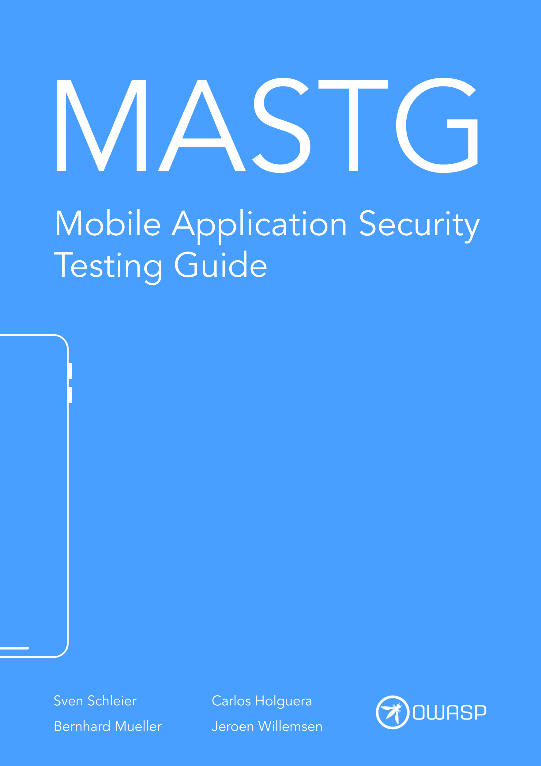
The Open Web Application Security Project (OWASP) Mobile Security Testing Guide is a comprehensive manual for testing the security of mobile apps. OWASP MSTG is widely recognized for setting the bar in mobile app security. It’s like the go-to handbook for app developers who want to build secure apps from the ground up.
Key Features:
- Extensive security checklists
- Detailed guidelines for data handling and vulnerability prevention
- Community-driven and constantly updated
2. NIST Special Publication 800-163 (AppVet)
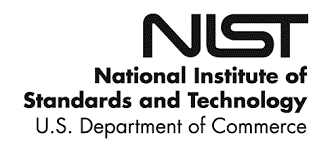
The National Institute of Standards and Technology (NIST) published SP 800-163, which provides guidelines for vetting the security of mobile apps. NIST standards are government-approved, making them the gold standard for federal agencies and contractors. If it’s good enough for the government, it’s good enough for you!
Key Features:
- Provides a framework for evaluating mobile app security pre-deployment.
- Offers guidelines for integrating security throughout the app lifecycle.
- Encourages the use of automated tools for continuous monitoring.
3. PCI Mobile Payment Acceptance Security Guidelines

The Payment Card Industry (PCI) Security Standards Council provides specific guidelines for mobile payment acceptance applications. If your app deals with credit card transactions, adhering to PCI standards is not just important—it’s mandatory.
Key Features:
- Securing payment data and encryption
- Emphasizing regular security testing and updates
- Guidelines for securing mobile payment devices
Mobile App Security Testing
Testing is a crucial part of mobile app security. Think of it as a routine check-up for your app’s health. Here are some types of security testing you should incorporate:
- Static Application Security Testing (SAST): This involves analyzing your app’s source code to identify vulnerabilities. It’s like going under the hood of your app and checking for any faulty parts.
- Dynamic Application Security Testing (DAST): DAST tests your app’s runtime behavior to identify vulnerabilities that may not be visible in the source code. It’s like taking your app for a test drive to see how it performs under different conditions.
- Interactive Application Security Testing (IAST): IAST combines SAST and DAST for a more comprehensive view of your app’s security posture. It’s like having a full diagnostic test for your app.
- Mobile Threat Intelligence: This involves staying updated on the latest mobile app security threats. Think of it as having a weather forecast for potential cyber threats—knowing what’s coming helps you prepare.
- Penetration Testing: This is a thorough assessment where a professional tester tries to break into your app. It’s like hiring a burglar to test your home’s security—if they can’t get in, you know you’re safe.
Mobile App Security Testing Tools
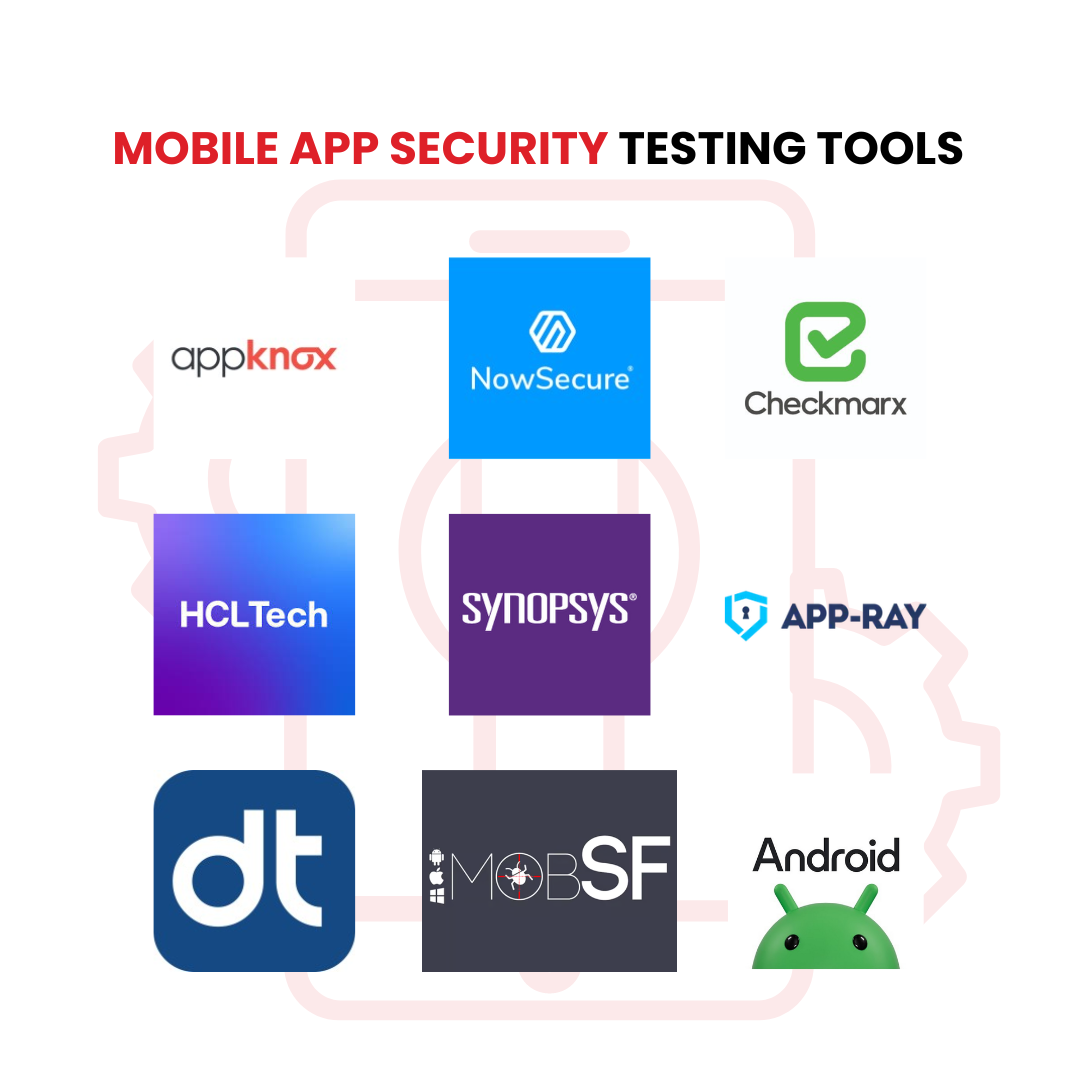
Here is a list of best mobile app security testing tools:
- Appknox
- NowSecure
- Checkmarx
- HCLTech
- Synopsys
- APP-RAY GmbH
- Data Theorem
- MobSF (Mobile Security Framework)
- Android Quality Starter
These Tools are like the gadgets in a superhero’s utility belt—they help you fight off threats and protect your app. Let’s have a quick rundown of these top Mobile App Security Testing Tools:
Appknox offers automated mobile app security testing. It’s like a security guard who never sleeps, constantly checking your app for vulnerabilities. Our developers use it because it provides detailed reports and actionable insights so you can fix issues quickly.
NowSecure is all about speed. It quickly scans your app for security flaws, ensuring you’re always one step ahead of hackers.
Checkmarx focuses on finding security issues in your app’s code. Think of it as a magnifying glass for your code, spotting tiny problems before they become big headaches.
At TechnBrains, we seamlessly integrate security into our development process, making it a standard practice in every phase. Security checks become as routine as coding itself, ensuring your app stays protected from the start.
HCLTech offers a suite of security testing services, from penetration testing to code reviews. It’s like having a full security team in your pocket. They tailor their services to your specific needs, like a custom suit for your app.
Synopsys helps you build secure apps by identifying vulnerabilities early. It’s the “prevention is better than cure” approach to app security. It helps our mobile app developers catch issues during development, saving us from costly fixes later on.
APP-RAY focuses on deep scans of your app. It’s like an X-ray for your app, revealing hidden security issues. It provides detailed analysis and recommendations, so you’re not just finding problems—you’re fixing them.
Data Theorem secures your app by continuously monitoring for threats. It’s like having a watchdog that never sleeps. It automates the hard work, freeing you to focus on building great features.
MobSF is an open-source tool that helps you analyze your app’s security. It’s like the Swiss Army knife of mobile security—versatile and powerful. It’s free, easy to use, and covers a wide range of security checks.
This tool helps you ensure your Android app meets security standards. Think of it as the quality control for your app, making sure it’s up to snuff. It’s perfect for developers who want to get security right from the start.
Mobile App Security Threats
Mobile apps face a variety of threats, much like superheroes face villains. Here are some of the most common:
- Malware: Malicious software designed to harm your app.
- Phishing Attacks: Tricks users into revealing sensitive information.
- Data Breaches: Unauthorized access to user data.
- Denial-of-Service Attacks: Overloads your app, causing it to crash.
Mobile App Security Checklist
Think of a security checklist as your app’s to-do list for staying safe. Here are some items to include:
- Encrypt Sensitive Data: Protects user data from unauthorized access.
- Use Secure APIs: Ensures that data is transmitted securely.
- Implement Strong Authentication: Prevents unauthorized access to your app.
- Conduct Regular Security Audits: Identifies and fixes vulnerabilities.
- Stay Updated on Security Threats: Helps you stay ahead of potential attacks.
TechnBrains will Keep Your App Secure in 2024 and Beyond.
At TechnBrains, we’re all about making sure your mobile app is secure in 2024. We know how important it is to keep your data safe, and we’ve got you covered. Our mobile app developers for hire understand that your app isn’t just a product; it’s a part of your business, and we treat it as such. By combining our deep expertise with the latest security practices, we ensure that your app is not only functional but also fortified against any threats.
1. Built-in security from Day One
We don’t just slap on security at the end. It’s baked into every step of our development process. From the first line of code to the final product, your app is designed to be secure. Our team conducts regular code reviews to catch potential security issues early. It’s like having a security checkpoint every few miles on the highway.
2. Cutting-Edge Tools and Techniques
We use the latest AI-powered tools to identify and neutralize threats before they can cause any harm. Think of it as having a guard dog that’s always on alert. We incorporate advanced techniques like behavioral biometrics to ensure only the right users can access your app. Whether it’s keystrokes or how someone swipes, we use it to keep intruders out.
3. Constant Monitoring and Updates
Our job doesn’t end when your app goes live. We keep a close watch, monitoring for any unusual activity. It’s like having 24/7 security cameras for your app. Security threats evolve, and so do we. We ensure your app gets regular updates to stay ahead of new vulnerabilities.
4. Educating Our Clients
We believe in empowering our clients. We’ll teach you and your team the best security practices to follow so you can avoid common pitfalls. We keep you informed about your app’s security status and any potential risks. No surprises, just peace of mind.
5. Compliance and Best Practices
We follow the top industry standards to ensure your app meets all security requirements. Whether it’s GDPR, HIPAA, or any other regulation, we’ve got it covered. We use the latest encryption techniques to protect your data, ensuring that even if someone tries to intercept it, they won’t be able to read it.
Let us take the stress out of mobile app security so you can focus on what you do best—growing your business. With TechnBrains by your side, your app is in safe hands.


